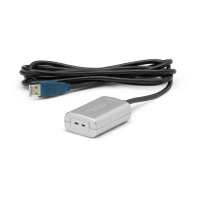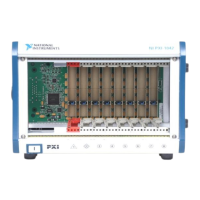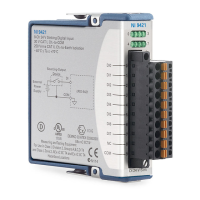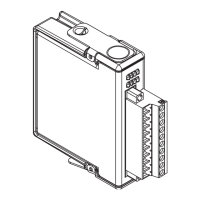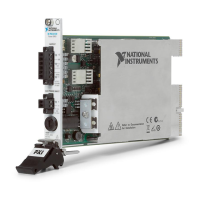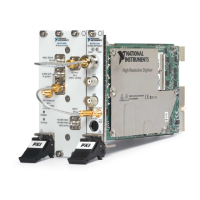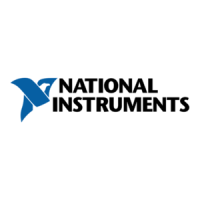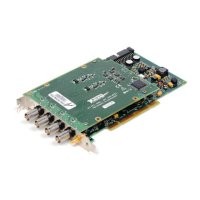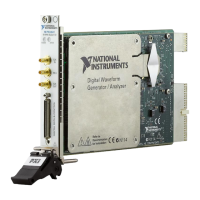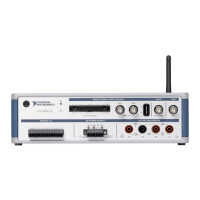© National Instruments Corporation 10-1 NI USB-621x User Manual
10
Digital Routing and Clock Generation
The digital routing circuitry has the following main functions:
• Manages the flow of data between the bus interface and the
acquisition/generation sub-systems (analog input, analog output,
digital I/O, and the counters). The digital routing circuitry uses FIFOs
(if present) in each sub-system to ensure efficient data movement.
•Routes timing and control signals. The acquisition/generation
sub-systems use these signals to manage acquisitions and generations.
These signals can come from the following sources:
–Your USB-621x device
–User input through the PFI terminals
•Routes and generates the main clock signals for the USB-621x device.
80 MHz Timebase
The 80 MHz Timebase can be used as the Source input to the 32-bit
general-purpose counter/timers. The 80 MHz Timebase is generated
from the onboard oscillator.
20 MHz Timebase
The 20 MHz Timebase normally generates many of the AI and AO timing
signals. The 20 MHz Timebase also can be used as the Source input to the
32-bit general-purpose counter/timers. The 20 MHz Timebase is generated
by dividing down the 80 MHz Timebase.
100 kHz Timebase
The 100 kHz Timebase can be used to generate many of the AI and AO
timing signals. The 100 kHz Timebase also can be used as the Source input
to the 32-bit general-purpose counter/timers. The 100 kHz Timebase is
generated by dividing down the 20 MHz Timebase by 200.

